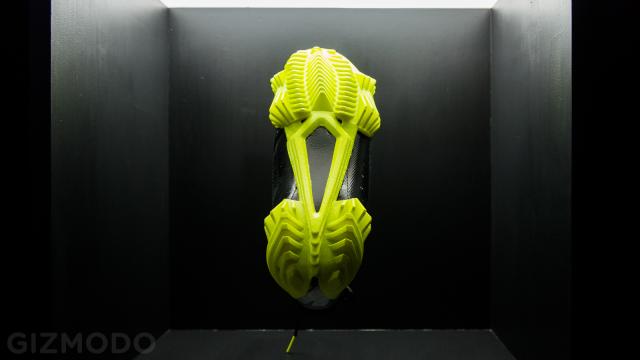Almost a full year ago, Nike introduced its first shoe ever built with the help of 3D printing technology. The thing was, that cleat, the Vapor Laser Talon (seen below), was built for an absurdly specific purpose and market — just the 40 yard dash, just for NFL players. Now, though, Nike is bringing what it’s learned from the VLT to the consumer market — innovations that, without 3D printing, we might not have seen for years to come.
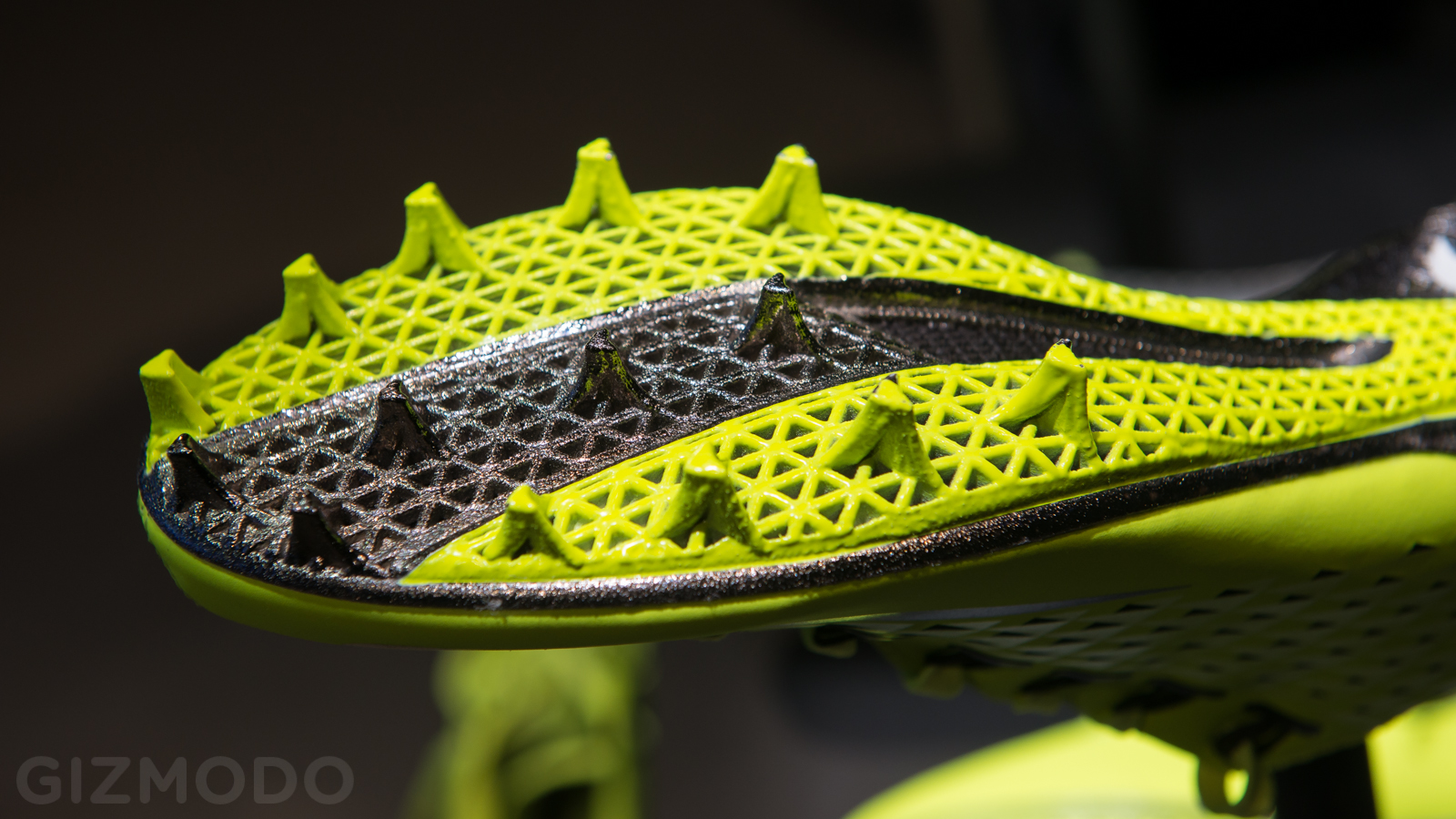
The cleat, the Vapor Carbon II, is being promoted as part of Nike’s 2014 Super Bowl line, but the shoe represents an incredible achievement in its own right. Before coming up with the final product that benefits the whole, Shane Kohatsu, Nike’s Product Innovation Director, was looking at a very specific problem that concerned the few. In a conversation with Gizmodo, Kohatsu explains:
Some of the best insights actually come from the edges of the sport, where the needs of the athletes are the most extreme. For the sport of football, the edge is the NFL Combine, the ultimate test for prospective NFL athletes. When you look at the Combine, the marquee event is the 40-yard dash. That’s the big one. Just hundredths of a second can make a big difference. So we set out to create a footwear solution for the 40-yard dash — something we’ve never done before.
To help athletes be their fastest on the 40 is to focus on where these athletes are their most explosive, which, in this case, is actually the first 10 yards — something Kohatsu calls “the drive phase.” But before you can even get to the drive phase, there’s what Nike refers to as the “zero step.” It’s the moment at the starting line where the player optimizes his stance to give him maximal power come blastoff.
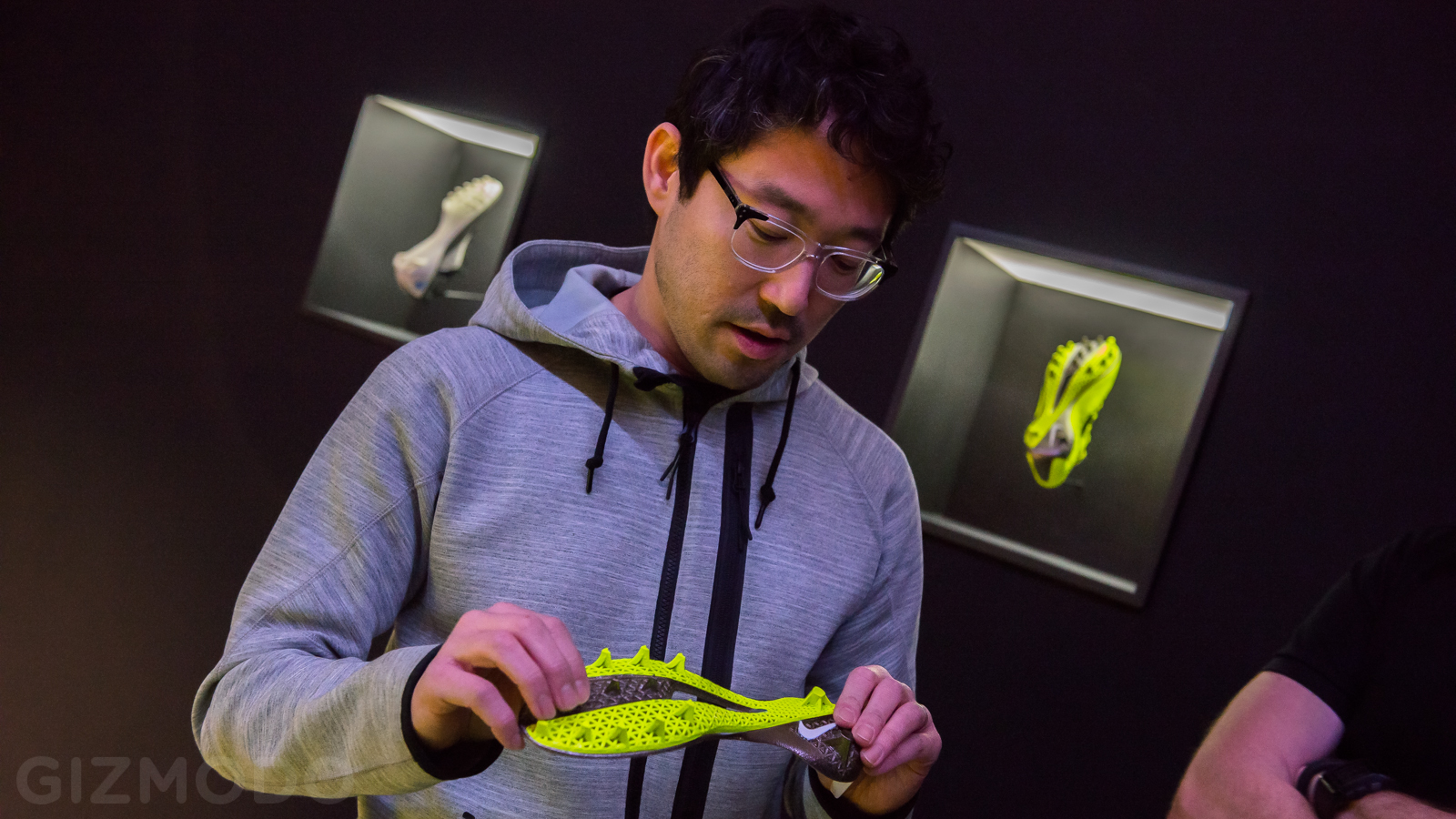
It’s at this point that any sort of slippage can be a huge detriment to your 40-yard-dash time, so Nike set out to create a shoe with the perfect amount of grip. According to Kohatsu, though, one of the challenges with evolving traction is that the plate component of the cleat — the bottom portion with the actual studs (i.e. traction elements) — is incredibly complex and time consuming to actually make with traditional injection mould methods. If they really wanted to put a variety of designs to the test, the design team would need to seriously accelerate the process. Kohatsu notes:
The problem with traditional methods is that to actually get one part, you have to actually spend all your time and energy creating the mould to create that one part; it’s the same process as if you’re mass producing this design a million times. So that’s why we initially leaned on [3D printing] technology.
A quicker prototype production process meant that the team could create, test, and iterate over and over again in a fraction of the time. Individual plates can be made in a matter of hours, something that would have taken Kohatsu and his team months previously. And every single time they hit print, they could change the plate design. After creating dozens upon dozens of prototypes, 12 actually made it to test with real athletes — something that would have taken 2-3 years previously and, thanks to 3D printing, only took six months.

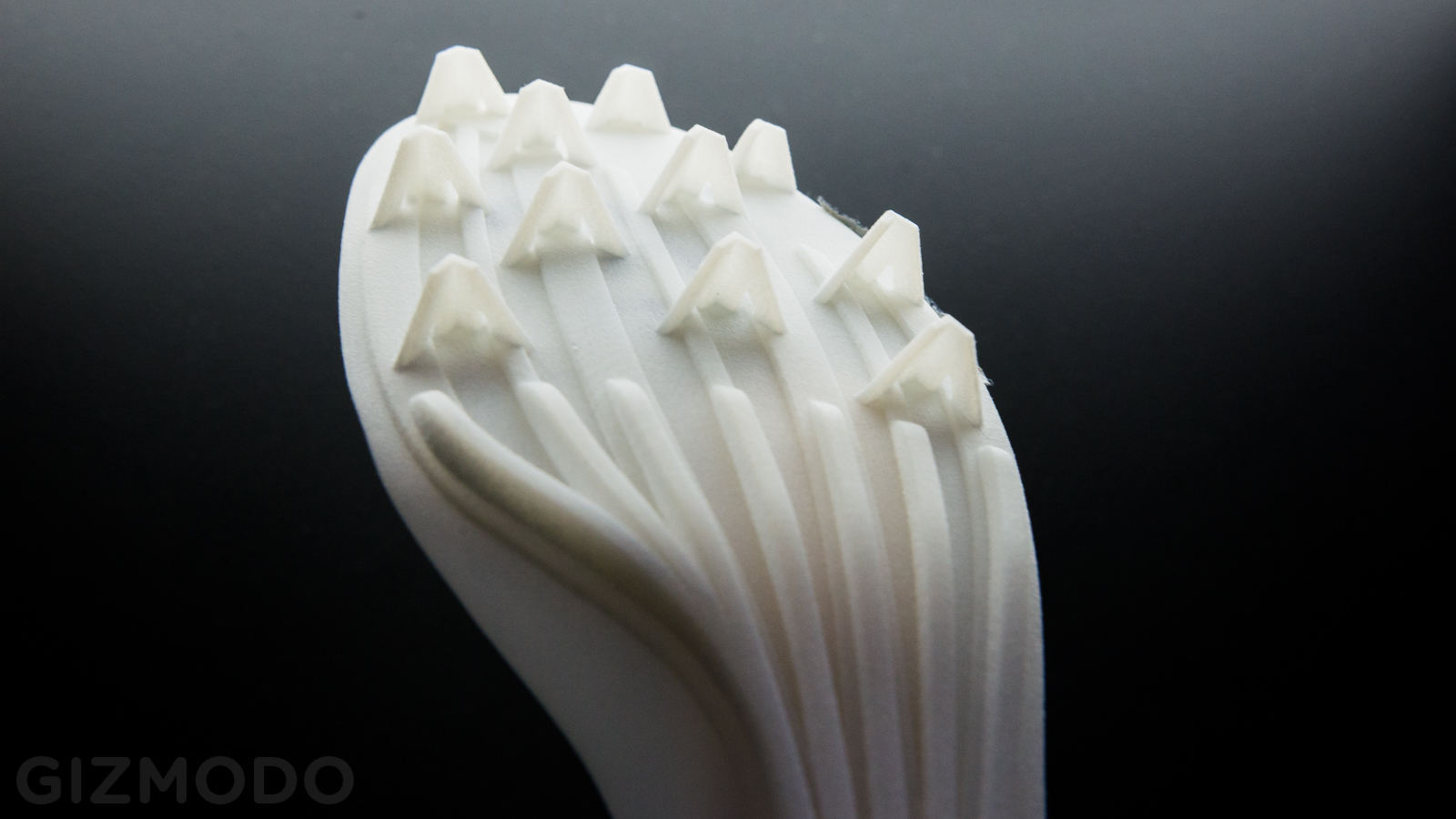
According to Kohatsu:
It’s a really liberating feeling as a designer. You can actually have an idea, sketch it out, and the next day, you have an actual part. In the past you’d sketch it out, and then there’d be some serious business meetings happening to make sure that this actually is the part we want to make. And so then we would put all of our costs and expenses into the mould that makes this one part, and then we’ll get the part back three or four months later.
For us to have an idea like, “Oh, you know, I like the shape of sharks’ teeth. Let’s do that.” Then the next day you have that concept, and if you feel confident that it actually has a high possibility of functioning, you can go and put it into an actual shoe. And you do that over and over and over. It’s huge leap.
After tossing out a variety of shapes — everything from cats’ claws to, again, sharks’ teeth — and trying many of them, the team finally determined than none other than the classic silhouette of a shovel gave them the perfect amount of traction. Taking the design, the team translated it into Nike’s brand new tri-star stud technology, each tri-star being meticulously placed to create the ideal combination of give and traction.
That’s when Ken Link, Nike’s Creative Director, took over. According to Link:
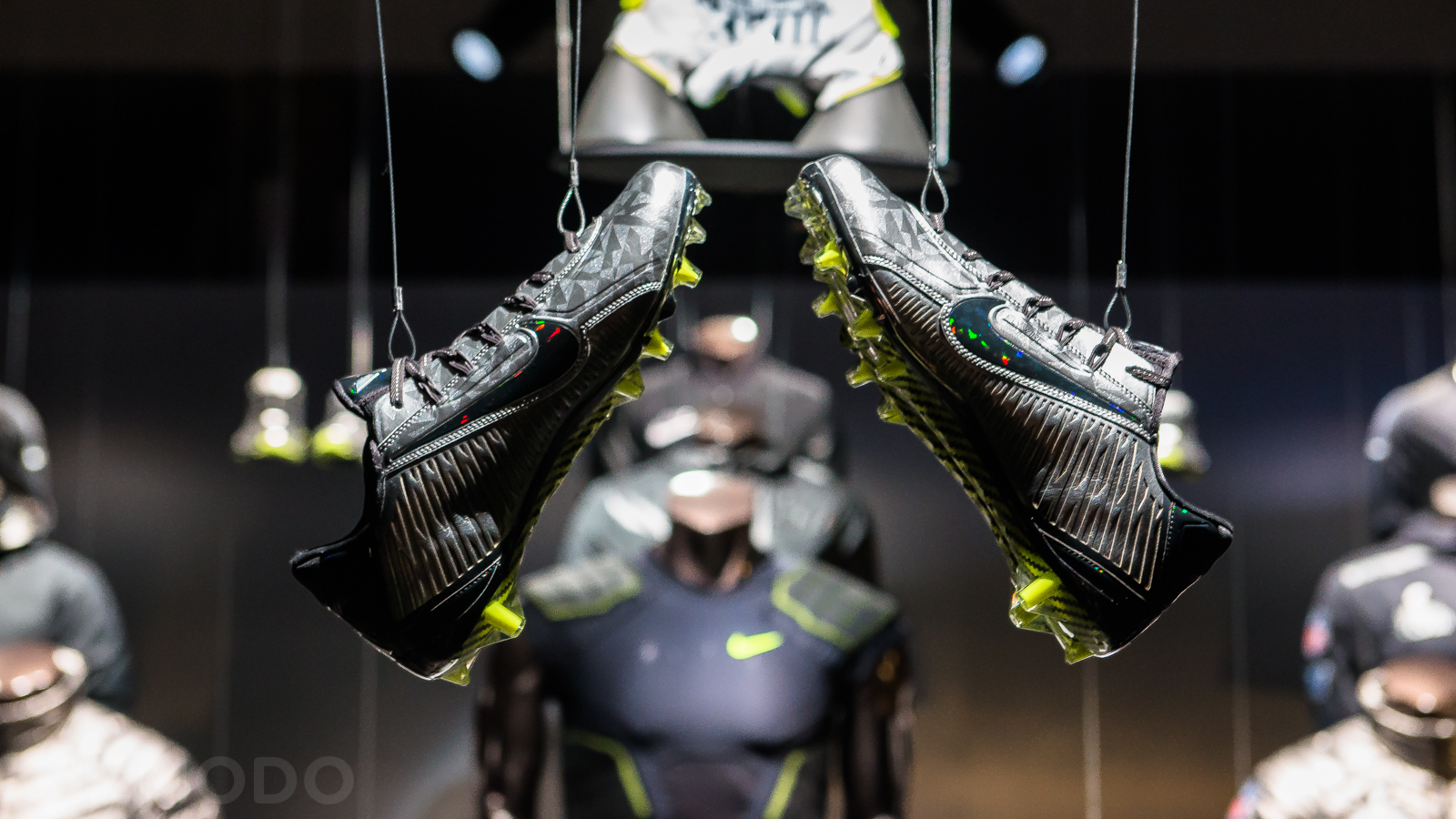
We love the VLT, because it made us look at product different and look at insights different. And more importantly, it really got focused and showed us that just a little bit could change the athlete’s game. We wanted to take that same mindset, same kind of insight gathering, and say hey let’s supercharge the cleat for game day.
Thus, the Vapor Carbon II (above) was born. Taking the VLT tri-star studs, the team placed them at the forefoot of the newest Vapor Carbon iteration. But as a more general-use cleat, they were also able to apply the design in other ways.

Link cited defensive backs as a prime example of how a player on the field might have needs counter to something specific to the 40-yard dash. In their case, the zero step is really about being able to go backwards, allowing them to react to the receivers as quickly as possible. So taking the same geometries as the VLT, Link’s team put them in the heel of their consumer game day shoe, allowing for greater penetration and zero slip.
So even though the Vapor Carbon II itself isn’t manufactured with 3D printing, a cleat backed by that level of precision science and research would sill be years away without it. Calling 3D printing “the future” may sound almost nauseatingly trite at this point, but at least in Nike’s case, it’s damn near true.
